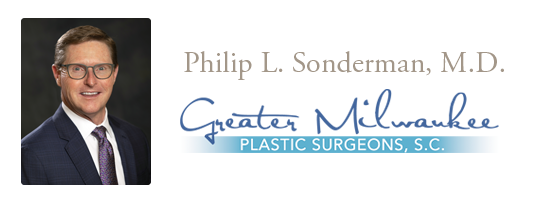 Abdominoplasty is an outpatient procedure which improves the contour and appearance of the abdomen. It contours or reshapes the underlying muscle framework and removes excess fat and loose skin. Mini-abdominoplasty is an option for women who meet specific criteria. Insurance does not cover these procedures
Abdominoplasty is an outpatient procedure which improves the contour and appearance of the abdomen. It contours or reshapes the underlying muscle framework and removes excess fat and loose skin. Mini-abdominoplasty is an option for women who meet specific criteria. Insurance does not cover these procedures
Many factors can affect the contour of your abdomen. Pregnancy can stretch abdominal tissues to an extent that’s uncorrectable with exercise. An unattractive abdomen can result from excess fat deposits that produce undesirable bulges or fullness and loose skin following childbirth or weight loss.
During pregnancy, uterus enlargement causes significant stretching of your abdomen tissues. After delivery, you can exercise to recover the tone in the muscles themselves, but fascial tissues that interconnect the muscles may have been stretched. Fascial tissues do not respond to exercise. Stretching or looseness of the lower abdominal tissues can allow bulging of your lower abdomen which you may not be able to correct with exercise.
After significant weight loss, fatty tissue is decreased beneath the skin of your abdomen. Your abdominal skin may become looser and sometimes hangs downward. Also, Skin does not respond to any type of exercise, but excess loose skin can be removed during abdominoplasty.
Localized deposits of fat can occur in areas of the abdomen producing undesirable contours even in individuals who are not overweight. Fat deposits can be corrected with suction lipoplasty alone, but abdominoplasty is necessary to achieve the best contour if stretched musculature or loose skin are present.
Abdominoplasty can improve three things:
- Reshape the underlying framework of the abdomen to improve shape and contour
- Remove excess fat deposits which may be present
- Remove excess loose skin to improve overall contour, appearance and shape of the abdomen
During your consultation, Dr. Sonderman will discuss with you the area of your abdomen which concerns you. He’ll explain specific components of abdominoplasty necessary to achieve the best contour and will show you the type of changes you can expect.
What are the scarring factors?
How is an abdominoplasty performed?
What can I expect after surgery?
What are the stages of recovery?
- What are the limitations?Limitations and risks with abdominoplasty are minimal. We will provide the best information to you so you’ll be able to make an informed decision. We will discuss all possible limitations and risks which may concern you during your consultation.The amount your abdomen can be reshaped depends on several factors. The quality of your tissue is an important factor of which we have little control.If you are significantly overweight, then you will get a much better correction if you achieve your ideal weight before abdominoplasty. There is a limit to the amount of fat which can be safely removed surgically during this procedure.To shape the underlying musculofascial framework and remove excess skin, incisions are necessary. Incisions are placed low on the abdomen. Their length depends on the amount of correction you require. In some cases, it’s necessary to reposition or reshape your umbilicus (belly button). Dr. Sonderman will discuss the specifics of your incisions during your consultation.
Abdominoplasty cannot change your underlying skeleton and is limited in the amount muscles can be reshaped. Dr. Sonderman will discuss any specific limitations during your consultation.
- What are the scarring factors?Any necessary incision will produce scars. The quality of these scars depends on several factors including your specific healing characteristics. You should think of scars as a trade off for significant improvement in the shape of your abdomen.Go back to questions.
- What are the possible risks?Risks common to all surgical procedures such as bleeding, infection, and scar tissue formation occur in a very small percentage of cases. We will give you more detailed information about these and other rare risks that concern you during your consultation.Go back to questions.
- Tell me about the operation…Incisions for abdominoplasty are placed low on your abdomen so they can be easily concealed. The length of the incision depends on the degree of looseness in your skin and how much will need to be removed as the upper skin is pulled down to improve the contour. Dr. Sonderman will discuss your preferences and specific ways in which he can minimize the length of your incisions.Go back to questions.
- How is an abdominoplasty performed?The skin and fat are lifted off the underlying musculature of the abdomen. To accurately control your abdomens final shape, Dr. Sonderman makes very precise measurements and markings before beginning any reshaping. If the fascia is stretched (the tissue which interconnects the muscles), then he will tighten it by placing multiple rows of sutures. In some cases, the muscles themselves may be repositioned for best correction. In essence, the underlying framework of the abdomen is reshaped.Next, excess fat is removed using suction of direct removal techniques. This reduces any excess thickness in the soft tissue to get the best re-draping over your new abdominal framework.Then, the skin is pulled downward to tighten it.Any excess tissue is removed below. Depending on the degree of looseness of the skin and the amount which needs to be removed, it may be necessary to reposition the umbilicus (belly button). Often, Dr. Sonderman is able to re-contour your abdomen without repositioning the umbilicus, preventing you from having a scar around it.Go back to questions.
- What can I expect after surgery?All your incisions will be carefully closed with stitches placed beneath the skin You’ll have very fine scar lines rather than “railroad track” marks. You’ll be able to shower or bathe immediately after surgery. None of the sutures will have to be removed because they simply dissolve.To minimize fluid collection, swelling, and improve your comfort in the treated areas, we ask you to wear an elastic garment (which we provide) for two weeks or more after surgery. The duration depends on the areas and extent of your procedure.Following abdominoplasty procedures, most patients have mild to moderate discomfort in the first 48-72 hours. Discomfort decreases rapidly thereafter. The extent of discomfort largely depends on the extent of surgery required to reshape the abdomen. We prescribe medication for discomfort as necessary.Your abdomen will feel tighter as the result of its new shape. The feeling of tightness will decrease over –1-3 weeks as swelling decreases and the tissues become accustomed to their new shape.
It is important to be “up and about” the day following the procedure. The amount of activity we recommend depends on the specific procedure that was required to reshape your abdomen.
You will be able to shower within 2-3 days following surgery, or sooner in some instances.
- What are the stages of recovery?Following are four stages of recovery after abdominoplasty procedures:
- Hospitalization Time: May be performed as a day surgery procedure or with a one night stay in the hospital.
- Bruising and swelling lessens in 1-2 weeks.
- Most patients return to work and social activity in 2-3 weeks.
- Most patients return to aerobic or strenuous exercise in 4-6 weeks.
We encourage immediate return to full normal activity. To assure the best result and prevent damaging the reshaped areas, we will tailor a program of exercise according to your specific procedure.







